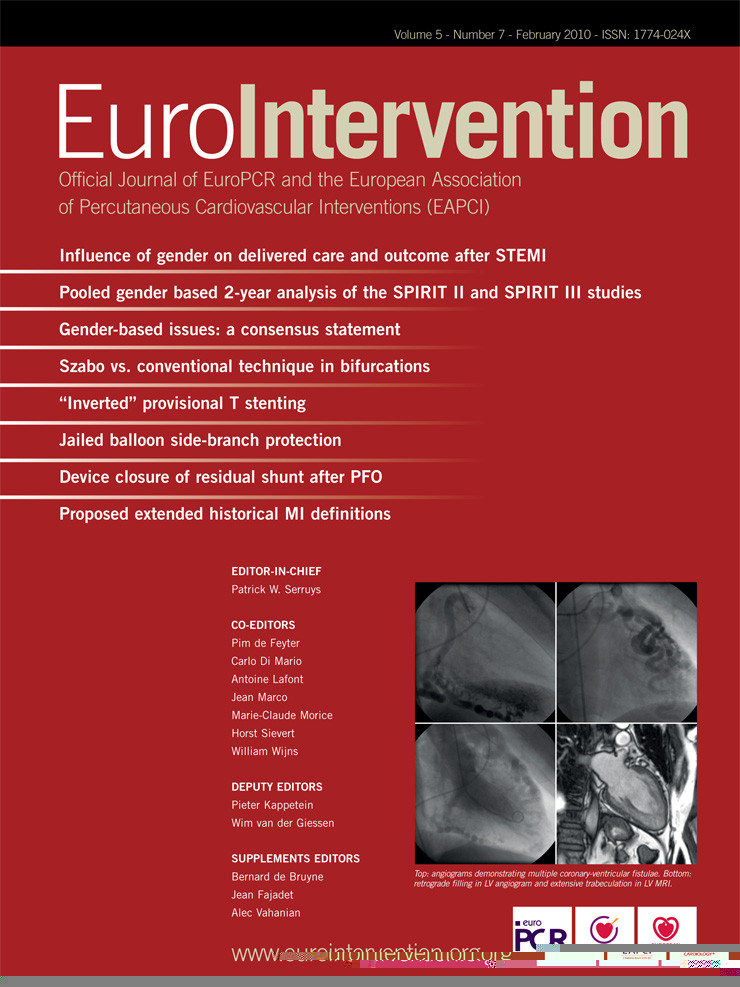Dear Editor,
We read with interest the article by Routledge et al on the 3-year clinical outcomes of the Arterial Revascularisation Therapies Study part II (ARTS II) study.1 The authors report a definite and probable stent thrombosis (ST) rate in bifurcations of 6.1% with a 1-stent and 11.5% with a 2-stent strategy. Whether bifurcation stenting with drug-eluting stents (DES) is associated with a higher risk of ST is an area of controversy. This has partly resulted from a lack of sufficiently large trials with long-term follow-up specifically performed on coronary bifurcations. Thus, we congratulate the authors for providing us with more long-term outcome data on DES in bifurcations. However, there a few points that could be clarified. Firstly, the ST rates in the present study are much higher than previously reported. Indeed, Sjögren et al recently reported that the rate of definite ST at three years in the Nordic I bifurcation study was 2.5% with a 1-stent and 1.0% with a 2-stent strategy.2 Similarly, data from our centre on 315 patients treated with DES on both branches of the bifurcation found a 2.5% incidence of definite or probable ST at a median follow-up of three years.3 These ST rates, covering similar time periods from a randomised trial and a large registry, are considerably lower than those reported in ARTS II. A possible reason for the high ST rates may be related to how these events were adjudicated. The authors have offered an explanation that “without precise documentation of the majority of these events” it was not possible to know if the ST event occurred in the bifurcation lesion or in another lesion. As this was a study of multivessel PCI with an average of 3.6 lesions per patient, it would be important to know the site of the ST. We also wonder if the authors have not highlighted one of the weaknesses of the ARC definition of probable ST when applying it to patients with multivessel coronary artery disease, and want to attribute the event to a specific stent located in a specific segment of the vessel. There is the risk of labelling any hard endpoint (such MI and death) as ST, even if it is well known that there are other causes that come into play. Thus, any MI in a patient with stents in the three major coronary vessels will become a “probable ST”. Finally, Tsuchida et al reported that the rate of definite ST at 1-year in ARTS II was 1.5% with 1-stent and 1.6% with 2-stents.4 This suggests that the majority of ST were very late with at least 10 of the 15 definite ST occurring after one year. In interpreting these data, it would be helpful to know the actual duration of dual antiplatelet therapy taken by patients, and the relation between discontinuation and ST. It would be valuable to clarify these points in order to avoid misinterpretation of the findings of this study. We agree with the authors that bifurcation lesions have been identified as a predictor of DES thrombosis in some studies. However, we are not convinced that optimally performed bifurcation PCI even with 2-stent strategies and appropriate DAT cover for 1-year (as per guidelines) is associated with an unacceptably high rate of ST.
References

